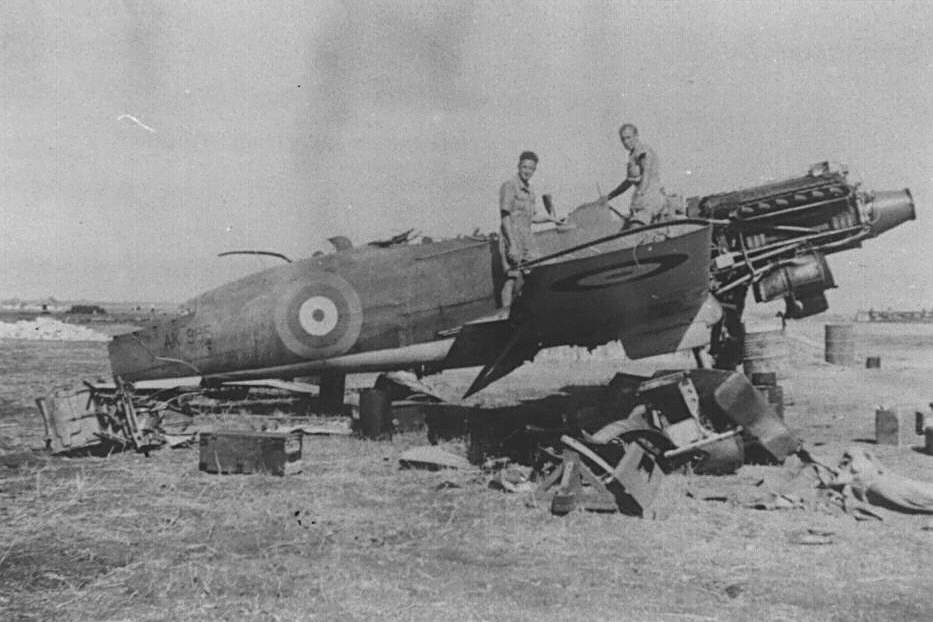
Tomahawk AK365 the unfortunate airframe that F.Off Davidson hit while taking off in AK474. As you can see damage was extensive (Cat E) leading to it's writeoff. Image via Doug Norrie.
by Steve Mackenzie

Tomahawk AK365 the unfortunate airframe that F.Off Davidson hit while taking off in AK474. As you can see damage was extensive (Cat E) leading to it's writeoff. Image via Doug Norrie.
Surprisingly this publication has never covered the Tomahawk IIBs used by the RAAF in the M.E theatre of operations. We will now rectify that oversight. In mid 1941 3 Sqn who were operating Hurricane Mk.Is (see 'in Miniature' issue 30/1 for our latest detailed article on those airframes, available as a back issue from the club website at http://magazine.ipmsnsw.com) , based in the Tobruk area were withdrawn for recuperation and re-equipment with a new fighter, the Curtiss Tomahawk IIB. After a period of leave, the unit had assembled at the base at Lydda 8 Km from Tel Aviv Palestine.
Tomahawk IIb colours
RAF Tomahawks were factory painted in the Temperate Land Scheme of Dark Earth and Dark Green over Sky. This was done using DuPont facsimiles of the RAF colors...so you have DuPont 71-013 for the Dark Green, DuPont 71-009 for the Dark Earth and DuPont 71-021 for the Sky Grey. Serials were Black. Standard RAF roundels of the time were applied in the usual six positions ( 'B' type upper wing, 'C' type under wing and 'C1' for the fuselage) and 3 colour fin flashes (equally divided into 3 segments). This is the colour scheme used during training at Lydda, the operations in Syria and the initial move to the Western Desert (before repainting in 'Desert' colours, covered in Part 2). At this stage spinner colours were all over the shop, most being in Dark Green or Dark Earth as originally received but there were a number of exceptions.
Historical Notes
The 3 Sqn RAAF pilots had a lot of problems adapting to the ways of the Tomahawks initially. They were used to 3 point landings as they had been trained to do and had used with their previous equipment. However this was not the correct way to land the P-40B as it could easily develop into a nasty ground loop, wiping off the under carraige or worse. The correct technique was to do a 'wheeler', landing on the main wheels only and keeping the tail up until enough airspeed had bled off. There were at least a dozen incidents, two airframe being written off, eight others having to go back to 102 RSU for repair or reduction to components and two more less damaged ones being repaired on the unit. The following list possibly does not include all of them as the unit's ORB does not always give complete details.
AK388 on 18/5/41 it was damaged in landing [pilot Lindsay Knowles], repaired and on 23/5/41 it was returned to the Sqn lineup.
AK410 on 20/5/41 Flt Lt Blake Pelly had under carraige failure resulting in Cat B damage which would have required sending the airframe to 102 RSU for repair.
AK365 on 26/5/41 F/O Davidson was taking off and with AK365 which was parked beside the strip. AK365 was Cat E (meaning scrapping, the photos make it obvious why).
AK474 on 26/5/41 F/O Davidson hit AK365 (per above). AK474 was not as badly damaged and was likely repaired at 102 RSU.
AK407 on 30/5/41 the undercarriage retracted during landing due to the pilot Percy Bothwell selecting 'wheels up' instead of the flaps.
unk serial on 30/5/41 Pilot Off John Jackson on touchdown the Starboard undercarraige collapsed causing Cat A damage to the prop and wingtip. Repaired by 3 Sqn.
AK440 on 30/5/41 (or 31st) Lt A.Smith (SAAF) lost control landing at Ismailia to refuel (on a delivery flight to Lydda) crashed beside the runway, Cat B damage, to 102 RSU.
AK462 on 3/6/41 Lt A.Smith (SAAF) damaged the airframe when he landed on an unfinished area of the runway and struck a metal survey rod, Cat B and thus to 102 RSU.
AK408 on 5/6/41 Spun into orange grove near RAF Lydda. The airframe was destroyed and Sgt Norman Arvon Evans (402113) killed.
AK439 on 9/6/41 F.Lt Alan Rawlinson made a wheels up landing after engine failure on takeoff at Lydda
AK435 on 10/6/41 Sgt Hedley Maurice Smeeton (408015) crashed landing at RAF Lydda, Cat B to 102 RSU (note ADF Serials says 11/6).
AK488 on 15/6/41 damaged when F.Lt Alan Rawlinson (386) could not get the undercarriage to lock down and it collapsed on landing at Lydda (note this was actually after the unit had commenced operations in the Syrian campaign). Badly damaged.
A couple of spurious ones
There are a number of images of two damaged airframes that had code letters ('B' and 'S') often said to be from Lydda and 3 RAAF. They are incorrectly identified as they were actually 250 Sqn RAF airframes from when they were undergoing conversion at RAF Aqir in Sudan in Apr-May 1941. Apparently they had similar problems during conversion as 3 RAAF at Lydda.
AK365
There are a lot of photos available of this incident, no doubt due to it's spectacular nature early during the training period. A number are set out as a table below.
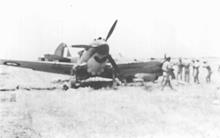
| 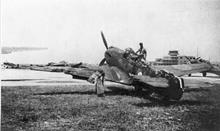
| 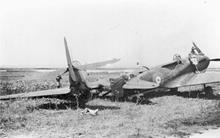
| 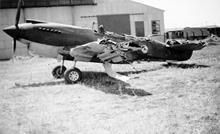
|
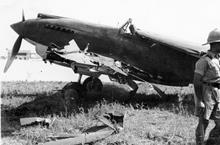
| 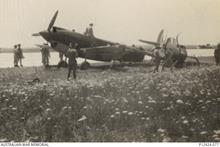
| 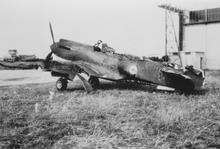
| 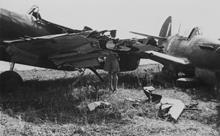
|
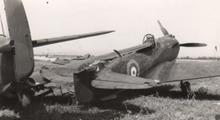
| 
|

A profile I did of the airframe Colours - Dupont Dark Earth & Dark Green over Sky Type S Gray. Black serials. Standard RAF roundels of the time in six positions plus fin flashes.
AK410
On 20/5/41 Flt Lt Blake Pelly had undercarraige failure resulting in Cat B damage.
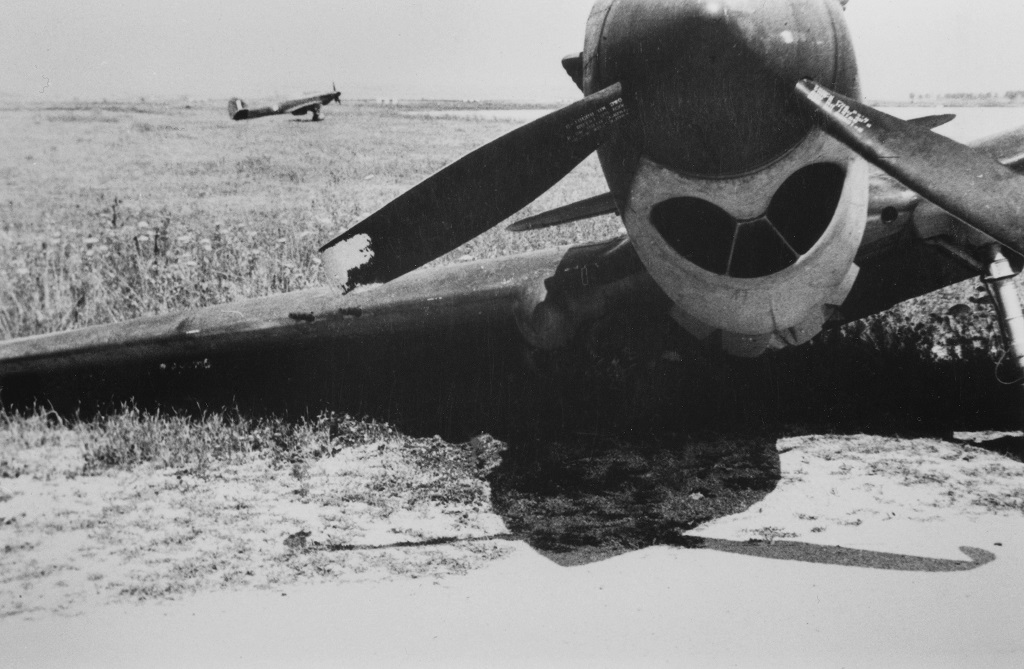
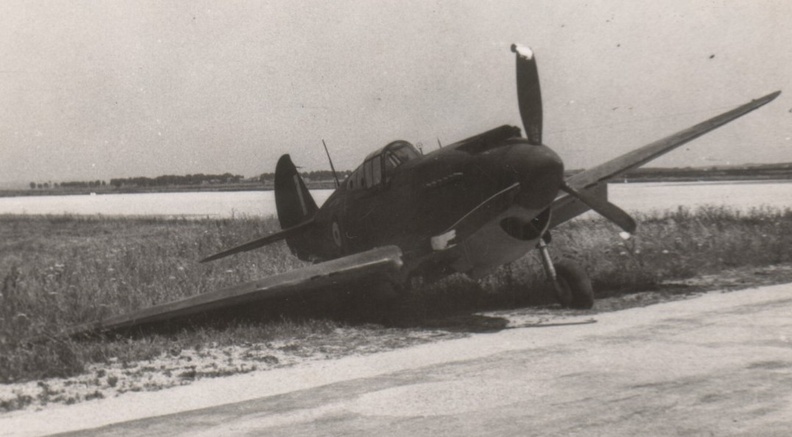
Images Sources are - Doug Norrie, Mick Mirkovic (AHMWA P880973).
AK435
On 10/6/41 Sgt Hedley Maurice Smeeton (408015) crashed landing at RAF Lydda, Cat B to 102 RSU (note ADF Serials says 11/6).
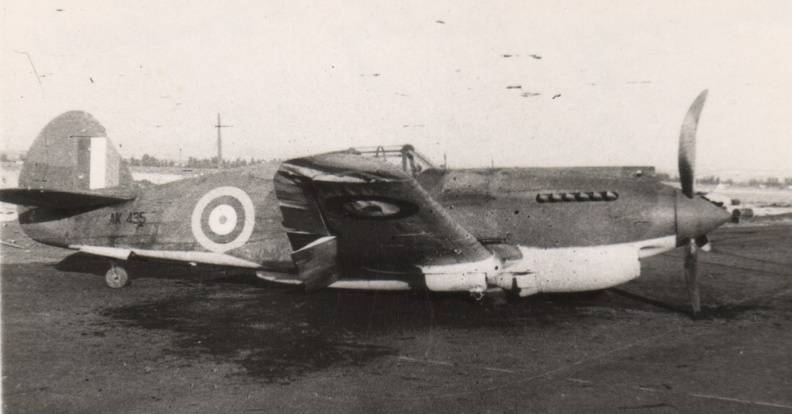

A profile I did of the airframe. Colours - Dupont Dark Earth & Dark Green over Sky Type S Gray. Black serials. Standard RAF roundels of the time in six positions plus fin flashes.
AK462
On 3/6/41 Lt A.Smith (SAAF) damaged the airframe when he landed on an unfinished area of the runway and struck a metal survey rod, Cat B.
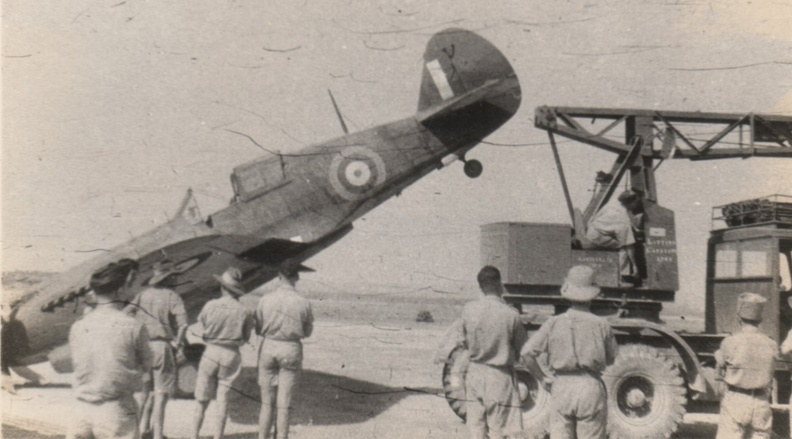
Image Source Mick Mirkovic (AHMWA P880986).
Unk serial
I have not been able to identify this one due to the serial not being visible and the large number of similar accidents with gear problems.
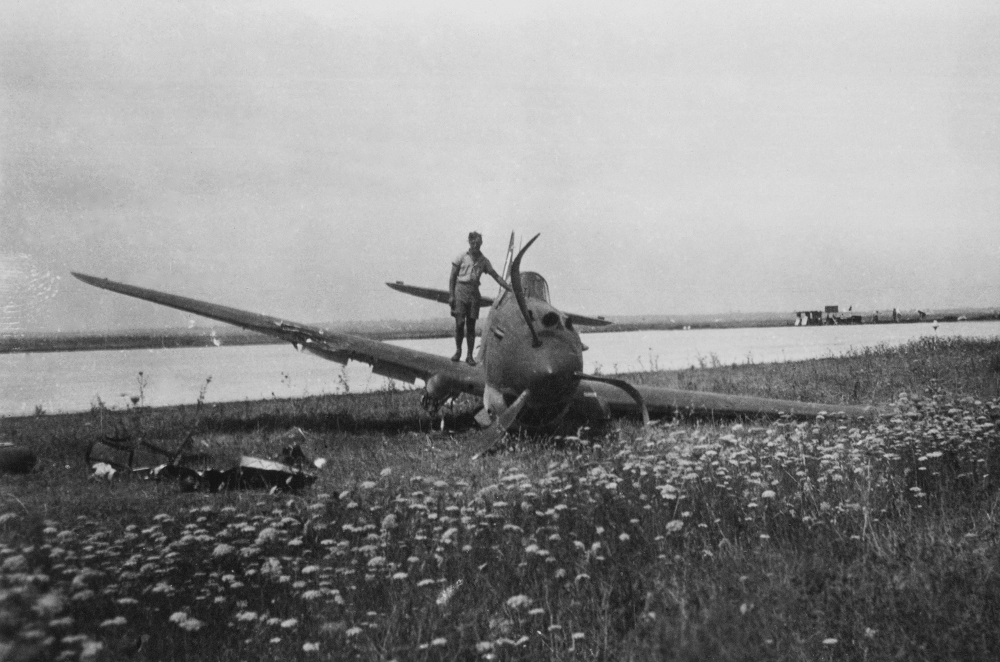
Image Source Doug Norrie.
Click on the 'Next' button to go to Page 2 of the article